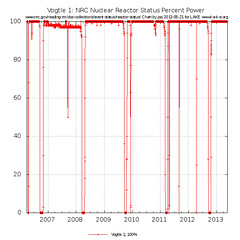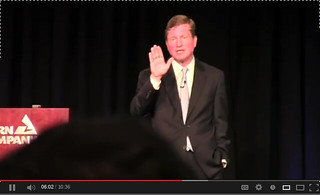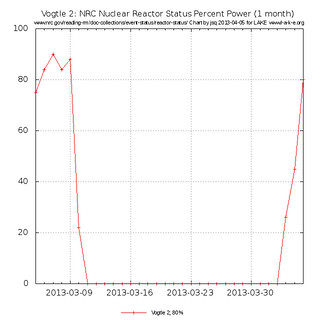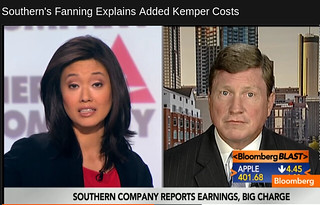Do nuclear reactors really deliver dependable baseload capacity? I hear industry execs say 99.99% uptime. The real average from seven years of NRC data for 104 reactors is 88.13%.
 According to Power Reactor Status Reports
posted online by the Nuclear Regulatory Commission,
here are the actual percent power percentages over time
for the 104 listed nuclear power reactors.
The timeframe is 31 March 2006 through today, 21 May 2013.
(The NRC data appears to go back to 1999, but seven years
is a good sample to start with.)
The computation for each reactor is the sum of the uptime
percentages for each day divided by the number of days.
The total uptime is the sum of the reactor uptimes divided
by the number of reactors.
Here’s the list, sorted two ways:
According to Power Reactor Status Reports
posted online by the Nuclear Regulatory Commission,
here are the actual percent power percentages over time
for the 104 listed nuclear power reactors.
The timeframe is 31 March 2006 through today, 21 May 2013.
(The NRC data appears to go back to 1999, but seven years
is a good sample to start with.)
The computation for each reactor is the sum of the uptime
percentages for each day divided by the number of days.
The total uptime is the sum of the reactor uptimes divided
by the number of reactors.
Here’s the list, sorted two ways:












